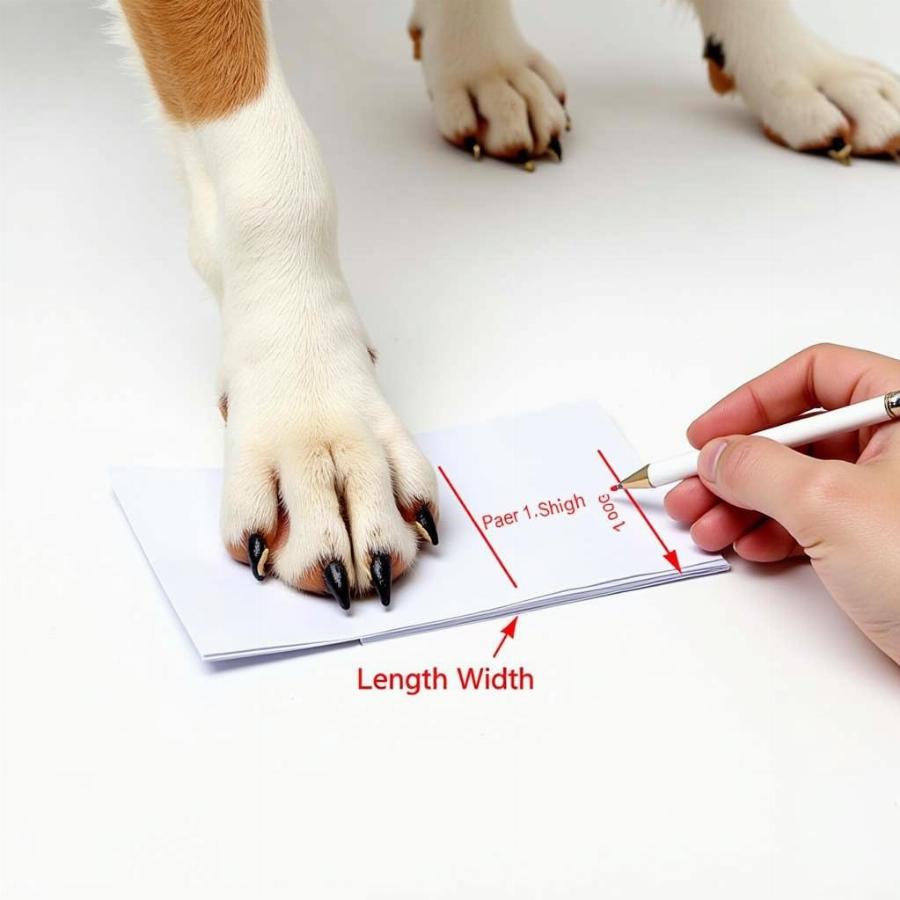Small booties for dogs are becoming increasingly popular among pet owners. Whether it’s protecting paws from harsh weather, providing extra traction on slippery surfaces, or assisting dogs with mobility issues, these tiny protectors offer a range of benefits. But with so many options available, choosing the right booties and ensuring a comfortable fit can be a challenge. This guide will walk you through everything you need to know about small dog booties, from selecting the perfect pair to getting your furry friend accustomed to wearing them.
Why Consider Small Booties for Your Dog?
There are several compelling reasons why you might consider investing in small booties for your canine companion. From scorching sidewalks in summer to icy pavements in winter, booties shield delicate paws from extreme temperatures. They also provide a barrier against rough terrain, sharp objects, and irritating chemicals like road salt or lawn fertilizers. For dogs with allergies, booties can minimize contact with allergens, reducing itching and discomfort. Additionally, booties can improve traction on slippery floors, preventing falls and injuries, especially for senior dogs or those with mobility challenges.
Choosing the Right Small Booties for Your Dog
Selecting the right booties involves considering your dog’s breed, size, activity level, and the specific conditions you’re addressing. Measure your dog’s paws accurately to ensure a snug but comfortable fit. Look for booties made from durable, waterproof materials with non-slip soles. Consider features like adjustable straps, reflective elements for visibility, and breathable fabrics for warmer weather.
Measuring Your Dog’s Paws for Booties
Accurate paw measurements are crucial for a proper fit. Place your dog’s paw on a piece of paper and gently press down to mimic how it spreads when walking. Trace around the paw, including the nails. Measure the widest part of the paw and the length from the back of the paw pad to the tip of the longest nail. Consult the manufacturer’s sizing chart to determine the correct bootie size.
 Measuring Dog Paws for Booties
Measuring Dog Paws for Booties
Getting Your Dog Used to Wearing Booties
Introducing booties gradually is key to a positive experience. Start by letting your dog sniff and investigate the booties. Reward them with treats and praise. Next, try putting the booties on for short periods, gradually increasing the duration as your dog becomes more comfortable. Keep initial walks short and positive, focusing on familiar and enjoyable routes.
Tips for a Smooth Transition
- Use positive reinforcement: Reward your dog with treats and praise throughout the process.
- Start slow: Introduce the booties gradually, allowing your dog to adjust to the sensation.
- Distract with play: Engage your dog in a favorite activity while they wear the booties to create a positive association.
- Ensure a proper fit: Ill-fitting booties can cause discomfort and hinder your dog’s movement.
Caring for Your Dog’s Booties
Proper care extends the lifespan of your dog’s booties. Clean the booties regularly according to the manufacturer’s instructions. Most booties can be hand-washed or machine-washed on a gentle cycle. Allow them to air dry completely before storing them. Inspect the booties regularly for signs of wear and tear, replacing them as needed.
Common Problems and Solutions
Some dogs may experience issues with booties slipping off or rubbing. Adjusting the straps or trying a different style can often resolve these problems. For dogs that persistently chew on their booties, consider using a bitter spray deterrent.
Conclusion
Small booties for dogs offer valuable protection and support in various situations. By carefully selecting the right booties, introducing them gradually, and providing proper care, you can ensure a positive experience for your furry friend. Protecting those precious paws will contribute to their overall health and well-being, allowing them to enjoy walks and adventures comfortably in any weather or terrain.
FAQ
- Are booties necessary for all dogs? No, booties are not essential for all dogs, but they can be highly beneficial in certain circumstances, such as extreme weather or for dogs with paw sensitivities.
- How do I know if the booties fit correctly? The booties should fit snugly but not too tight. Your dog should be able to walk comfortably without the booties slipping or rubbing.
- Can my dog wear booties indoors? Yes, booties can be worn indoors to provide traction on slippery floors or to protect paws from allergens.
- How often should I clean my dog’s booties? Clean the booties regularly, especially after walks in muddy or wet conditions.
- What if my dog chews on their booties? Try using a bitter spray deterrent to discourage chewing.
Do you have more questions about dog paw care? Check out these related articles:
- blisters in dogs paws
- paw ointment for dogs
- cold paws in dogs
- dogs in fall
- hardwood floors and dogs slipping
Beaut Dogs is your trusted source for all things related to dog care, offering expert advice and valuable insights to help you provide the best possible care for your canine companion. For personalized support and answers to your specific questions, please contact us via Email at [email protected]. We’re here to help you navigate the wonderful world of dog ownership.